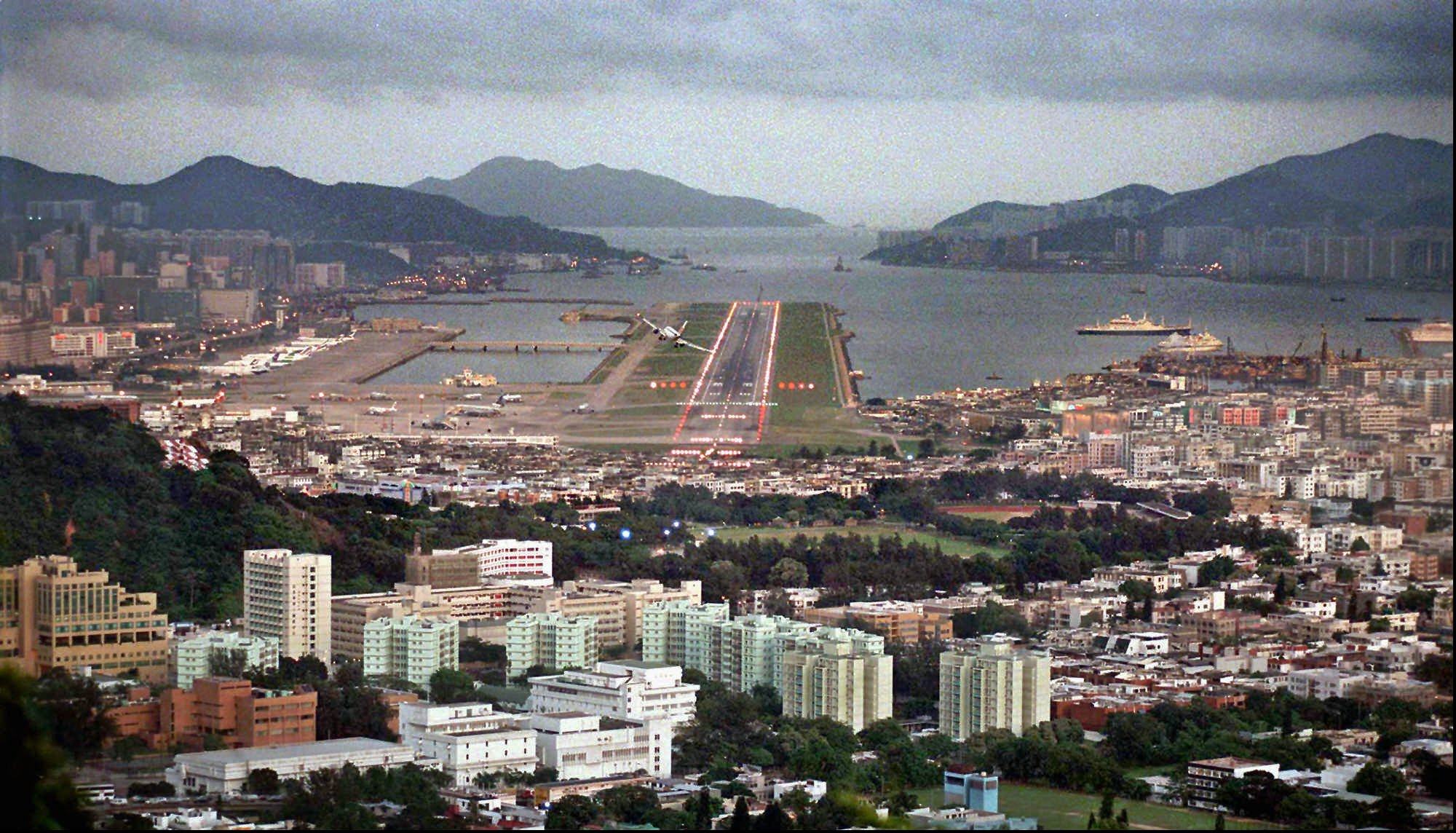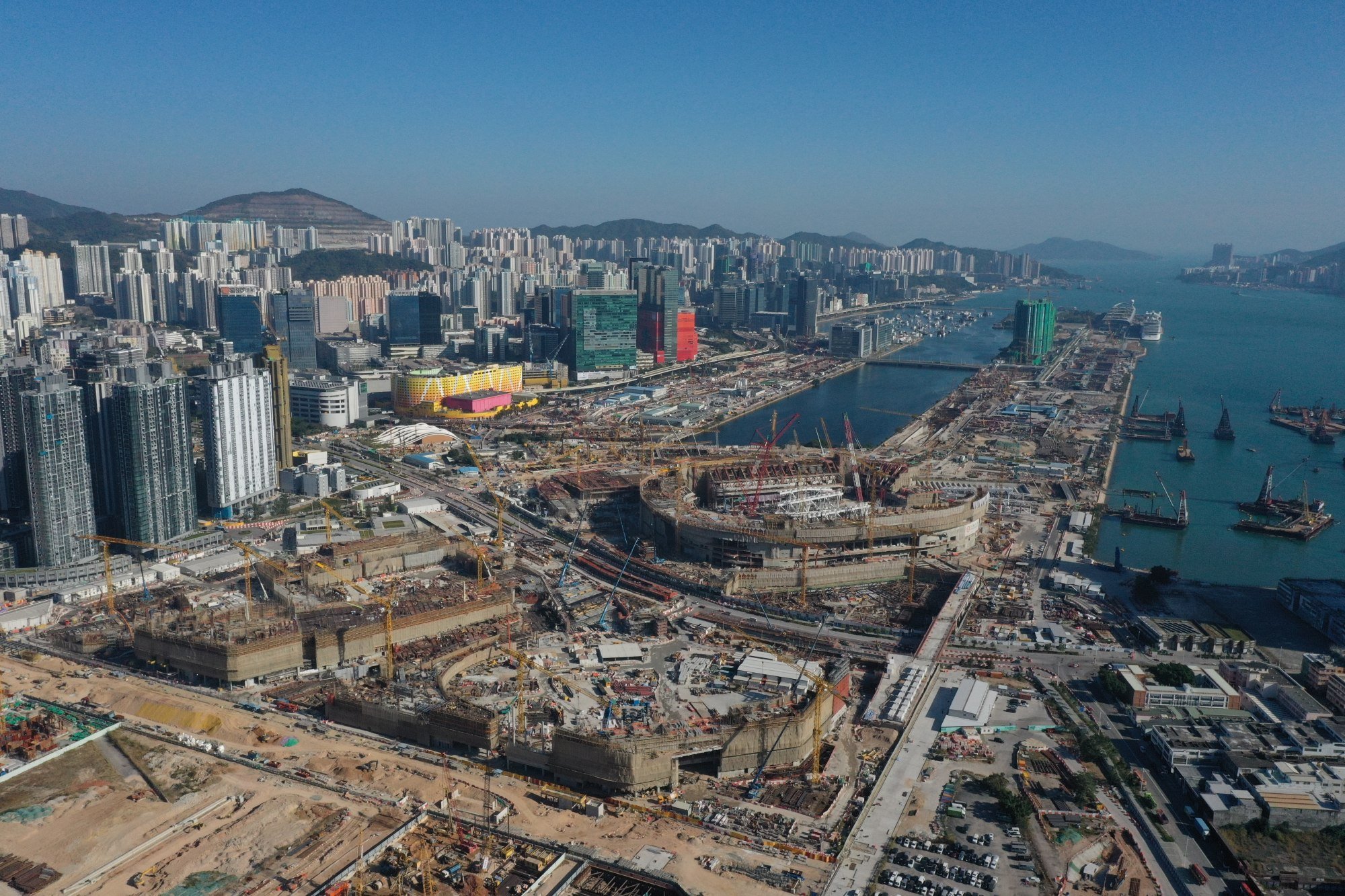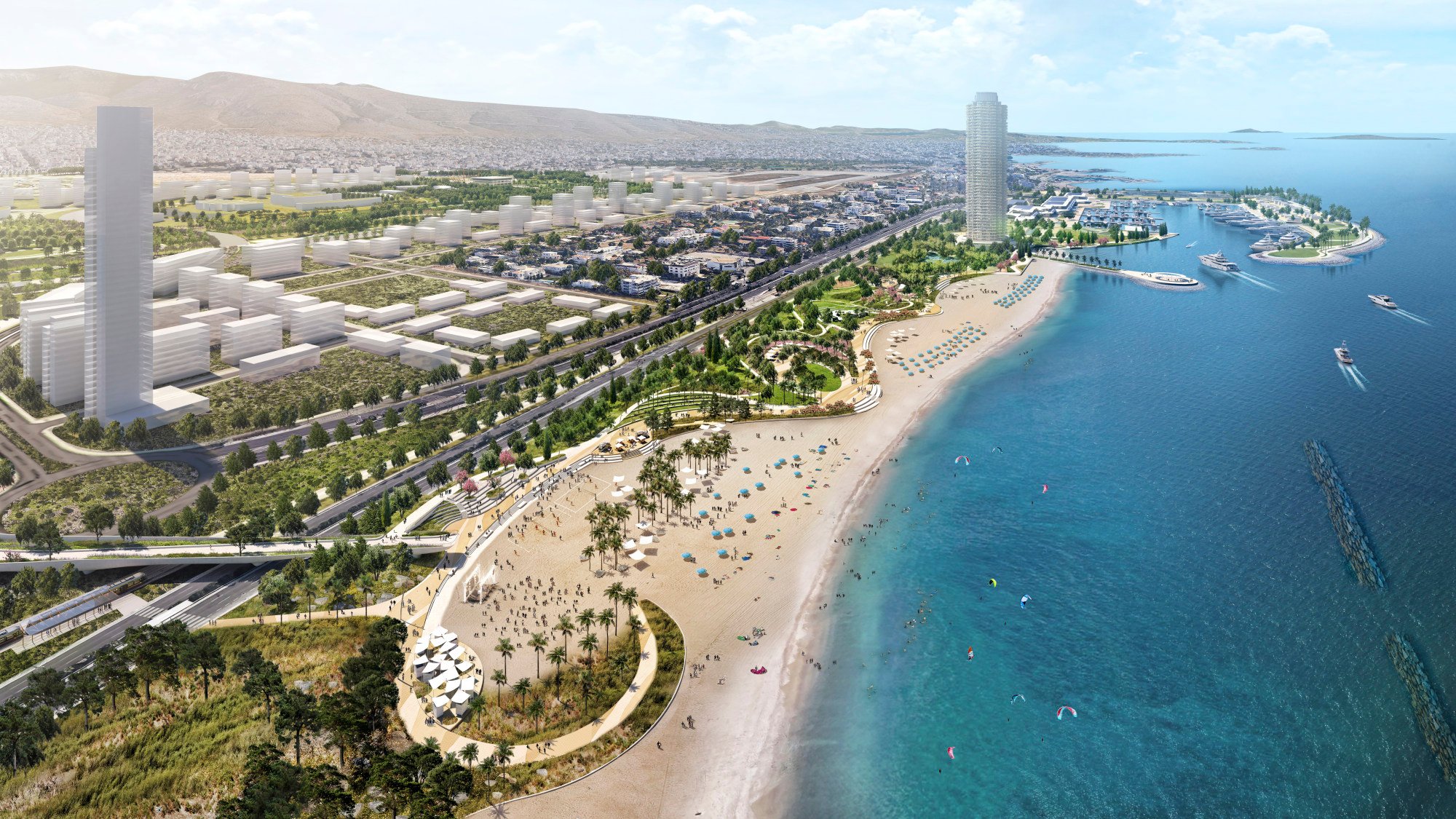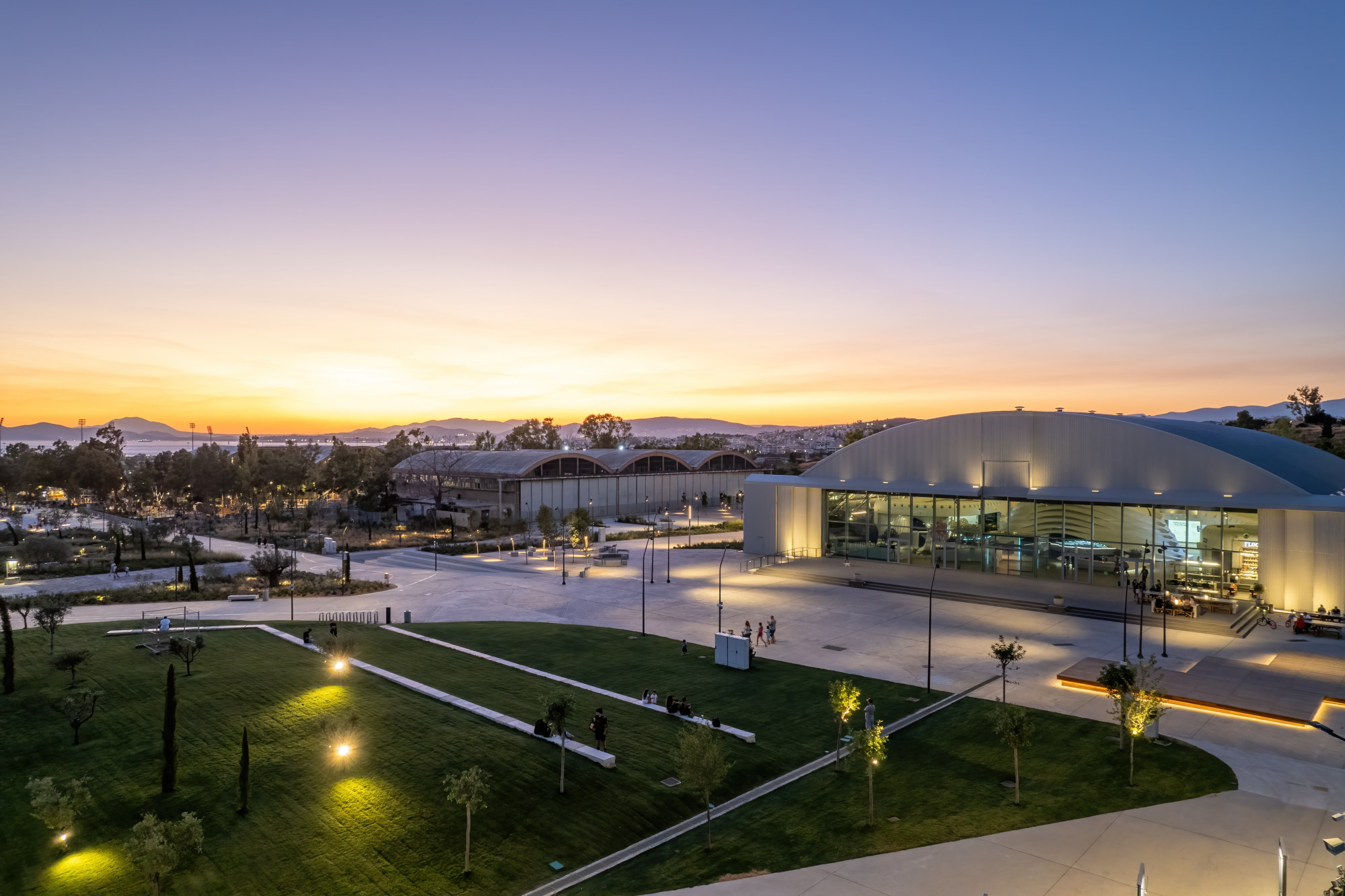
How Hong Kong’s ‘laughable’ Kai Tak airport redevelopment project is being shown up by Greece
- The Kai Tak development is still a long way from the grand visions reported when the old airport shut 24 years ago
- Greece’s own airport redevelopment site, The Ellinikon, appears to be progressing more decisively. We paid it a visit
When Kai Tak closed on July 6, 1998, the huge tract of land suddenly freed up held great promise for the people of Hong Kong.
In September 1998, the South China Morning Post reported on a HK$36 billion plan to build a “city within a city” at the former airport: “Housing for 320,000 people, 90,000 permanent jobs and the SAR’s largest urban park will be created on the 579-hectare site, more than half of which is to be reclaimed from the harbour.”
It was envisaged the development would take 18 years to complete – so, by 2016 – and would see the building of 118,000 flats with shops, government and school buildings, a hospital and godowns. There would be a 50-hectare park, a sports stadium, a transport museum and an aviation academy “to mark Kai Tak’s past”.
In the years since, other plans have been put forward for Kai Tak – including those for a tourism “node” and a monorail to join the whole thing up.

Fast-forward to today and all that stands where Jumbos once landed is a cruise terminal, opened in 2013, three public housing projects and a dozen or so private developments, as well as a hastily built Covid-19 isolation facility.
Other developments are under construction, but it’s fair to say the wide-eyed dreamer of 1998 would be underwhelmed with what’s been achieved in the intervening quarter of a century.

Almost three years after Kai Tak closed, another major inner-city airport ceased operation, ceding a large plot to hopes and dreams. On March 28, 2001, Athens’ Ellinikon International Airport shut after 63 years of service.
Although the site was used to host events during the 2004 Summer Olympics, which the Greek capital hosted, it had lain even more underused than Kai Tak. Until now.
In June 2021, Lamda Development acquired the former airport and the adjacent coastal frontage. On those 6.2 million square metres, the Greek developer is building its own “city within a city”: The Ellinikon.
The vision is bold, the timeline is tight and, Lamda promises, the end product of its €8 billion (US$8.3 billion) investment will benefit the people of Athens as much as it will the moneyed elite the properties are aimed at.
On a recent visit to the site, we discovered just how bold the undertaking is.
Work is under way on a major underpass, a storm water channel to help revive concreted-over streams and a cluster of buildings for associations working with the disabled. The kilometres-long fuel line that ran below the airport tarmac has been ripped out, the old runway is being broken up for reuse and contaminated soil is being cleansed.

But if Phase 1 of the project is to be completed as planned, by 2025, the next few years will be hectic.
Included in Phase 1 and all mapped out in glossy brochures are:
-
10,000 residential units (of various degrees of luxury, with some in the Foster + Partners’ designed Riviera Tower on the waterfront)
-
An integrated resort casino in the mould of Singapore’s Marina Bay Sands
-
Three hotels
-
An office tower housing a workforce of 25,000
-
A commercial hub designed by the architects at Hong Kong’s Aedas
-
A yacht club and the existing marina upgraded to a facility with 310 berths (including those for superyachts)
-
The Riviera Galleria, 22,000 square metres of upmarket retail, F&B and leisure space next to the marina
-
A beach club
-
An education hub
-
A sports park (integrating some of the infrastructure built for the Olympics)
-
A health and medical hub
-
A public beach more than 1km in length
A lot, in other words.

Already open is the Ellinikon Experience Centre, an interactive exhibition based on future attractions and built in one of a handful of hangars retained from the airport days.
And another aviation relic to be given a fresh lease on life will be the East Terminal, which was designed by Finnish architect Eero Saarinen and completed in 1969 – but that’s for a later phase.
Perhaps the project’s most impressive feature will be its 2 million square metre public park, which should be welcomed in a city that has little outdoor space compared with other European capitals.
Sustainability is being built into the Ellinikon, we are told, with major buildings designed with LEED ratings in mind, and smart sensors being installed to control everything from lighting in public spaces to the watering of plants.

And 100 per cent of the electricity used will come from renewable sources, said Lamda CEO Odisseas Athanasiou, during a press conference. However, here things get a little vague, as is often the case when the word “sustainability” is employed.
According to Lamda, “It is anticipated that sourcing fully renewable energy both on-site and off-site will be accomplished in Phase 1,” which sounds too good to be true given Phase 1 is due to be complete by 2025.
Further prodding revealed that some of that renewable energy will be provided by solar panels bolted onto the new buildings and perhaps in on-site renewable energy parks. Green energy will also be siphoned from the national supply using “Greece’s most advanced underground power grid”, which will be able to take only that electricity which has come from renewable sources. (The overall benefit of doing that is not clear.)
Will all that produce enough to run the site?

Promotional materials explain further: “Technology is developing rapidly […] The solutions available today may be far more efficient five years from now. Therefore, it is essential that the process of sourcing and creating renewable resources remains fluid throughout the course of The Ellinikon’s development in order to use the most comprehensive technology available.”
So, there we have it; Athens’ old airport will run fully on renewable energy just as soon as doing so is possible.
However sustainable The Ellinikon is deemed to be at launch, though, it seems unlikely anyone will accuse Lamda of a “laughable lack of planning”.
Bhutan holds its largest-ever overseas art exhibition
Bhutan has rebranded and is getting busy.
Organised by VAST (Voluntary Artists Studio of Thimphu) Bhutan, the exhibition features 68 artists from the country and is open for public viewing at the Belfius Bank on Rue de La Loi, until the end of March 2023.

“The theme ‘Healing with Happiness’ is inspired by the innate Bhutanese sense of optimism and strength, which is also reflected by Bhutanese art,” says Asha Kama, VAST Bhutan founder and curator of the exhibition.
“We invoke blessings for good fortune to imbue all our best intended and greatest endeavours. Traditional [Bhutanese] paintings and motifs signify auspiciousness and goodness, meant to bring healing wherever they are placed.”

